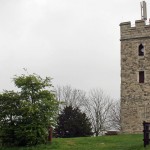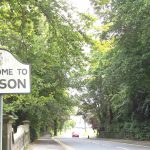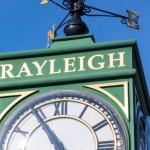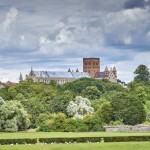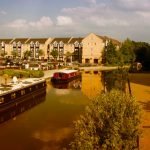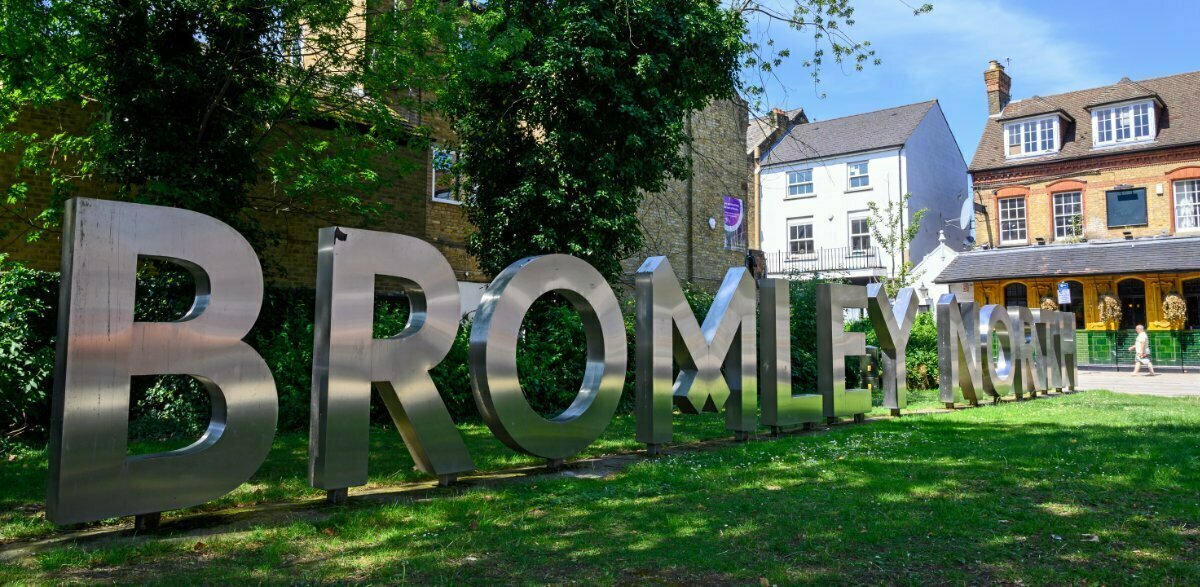
Bromley is both a historic market town and a London Borough situated in Southeast London. Not far from Charing Cross, this former village grew exponentially just after the start of the Industrial Revolution. We love to find out about the best things to see in London. Could Bromley be one of those best things? Let’s find out as we take the Five Minute Spare tour of Bromley. All you ever needed to know and more.
Early History of Bromley
Bromley was given its first charter all the way back in 1158, so we have a lot of history to get through. Its origins date all the way back to 862, meaning that Bromley had already existed for a couple of hundred years before it was ever given permission to exist by the king. Is first mentioned in an Anglo Saxon charter and shared its name with a town up in Essex, named Great Bromley. The word Bromley actually translates from Old English. That meant a woodland clearing Containing broom. For all those that don’t know, the plant broom or Scotch Broom is the name of the yellow flowering shrubs that can be found in the UK.
So, Bromley was named after a clearing in the woods where yellow flowers grew. All things considered, that’s kind of a nice way to earn your name. In 862 AD Ethelbert, the King of Kent was the man who first wrote about Bromley. He gifted the land there to the Manor of Bromley. That same manner later passed into the hands of the Bishop of Rochester. The Bishop of Rochester built a palace at Bromley, which remained in the hands of the bishops until 1845. It was the palace at Bromley, which would have served as a safe place for villagers to flock to. As we know, towns often grew up around religious establishments, forts, and castles.
We next note the town of Bromley in Kent was present in the Domesday Survey, taken in 1086. It is mentioned as the land of Saint Andrew and the Bishop of Rochester. It contained no more than 56 households which made it one of the largest settlements recorded in the survey. The Domesday Survey was conducted by King William the Conqueror because he wanted to know which lands he had conquered. He had only been here 20 years at the time. It was the first official Ordnance Survey performed in the UK. It is interesting to scroll through the towns contained within it to see if you can find your own hometown.
The bishop is the only noted landowner in the area. His land consisted of 30 villagers and 26 smallholders. He had 13 ploughlands with 13 plough teams to work the land. He had two acres of meadows, woodland that contained 100 swine, 1 mill, and many tenants. The land made £12 and 10 shillings per year in 1066, but by 1086 it was making 18 pounds. The lands of the church were fruitful indeed.
Bromley during the mediaeval ages
During the Middle Ages, we know that Hornchurch Priory was built Circa 1301. The windmill at West Wickham was built in 1308 and in 1310 William De Bilhberg was given permission to strengthen his Bromley house. This would later become known as Simpson’s Place. In 1332 masses were celebrated at Bromley Manor Chapel which was the first mention of religious services given at this time.
In 1400, the Blackbrook family moved away from Bromley. To this day, Blackbrook Lane is named for their family. In 1447 Bromley Market moved from a Tuesday to Thursday. It has been held every Thursday since apart from a short time in the 1860s. In 1449, the watermill that is mentioned in the Domesday book was purchased by Lord Saye and he converted it into a paper mill. During the Middle Ages, paper was made in Bromley.
In the 17th century. Robert Simpson sold Simpson’s Place to John Style of Langley and Robert Beckingham was named as the owner of the White Hart Inn in Bromley. The first mention of the Great House in Bromley, which was owned by a London Brewer named Thomas Knight was in 1532. In 1588 John Scott of Bromley gave 25 pounds (a princely sum) towards the Armada loan to help Britain build ships.
There was an outbreak of plague in 1603 and there would be again and again throughout history. The plague hit Bromley again and 1630, the same year that Widmore house was built. The Bishop of Rochester was forced to remove himself from the palace for his own protection. A diarist named John Evelyn was robbed on Bromley Common in 1652. The assailants jumped out from behind an oak tree to attack him. In 1662 a survey listed 129 households with a population of about 700 people. Bromley College was built in 1672. It was meant to be a home for widowed clergyman’s wives.
Local cabinetmaker John Dunn set up his business in Bromley Marketplace in 1710 and it is still there to this day. Bromley Charity School was then added in 1716. The Bromley Parish Workhouse opened in 1732. The market house was erected in 1729 and the first Bromley cricket match took place in 1735. The first official record of a Bromley cricket team is in 1742[i]. Let’s stop there and review some fun trivia about Bromley before we dive into the Industrial Revolution headfirst.
Bromley Trivia
Here at Five Minutes Spare, we like to give you a bit of local trivia. Bromley has got some great background that we could draw from. Here are our favourite fun facts about Bromley. Use them wisely.
- There was an eating competition at Bromley Fair in 1726. The winner consumed four pounds of bacon, a whole bushel of beans, 2 pounds of butter, a quartern loaf and a gallon of small beer. They won 5 guineas.
- In 1753 a woman named Elizabeth Monk died in Bromley. She was aged 101.
- Bromley is the birthplace of HG Wells. Respect.
- Bromley’s schools are considered some of the best in England. More than 90% of them are Ofsted rated as good or outstanding.
- The queen herself visited to officially open the Glades shopping centre here.
- Local team the Cray Wanderers was established in 1860 and are thought to be one of the oldest teams in England[ii].
With so much hidden history to pick apart, we really ought to get on with it. Here’s what happened in Bromley during the Industrial Period.
Industrial Era Bromley
In 1795 the paper mill was bought over by an oculist named Thomas Ridbright. It shut finally in 1832. In 1798, a highwayman was hanged on Bromley Common, which could well now be haunted. He had an accomplice who escaped. During this time, it evolved from being a place people passed through on their pilgrimages, to a place people passed through when travelling between London and Hastings. There would have been coaching inns and plenty of trade from passing tourists here. The railway arrived in 1858 which led to plenty of expansion into the common. They got their own local government act in that same year, which led to the formation of a board in 1867.
A new paper mill was opened in 1860 and the Cray Football Club opened – which claims to be the second oldest in the world, not just in Britain. Three new churches were built in the 1860s to accommodate the new parish sizes as people moved here. The landed gentry favoured Bromley because of the proximity to London, yet retaining a countryside feel. HG Wells was born in 1866 at 47 High Street. By then, Simpson’s Place had become nothing but ruins and they were removed. There was a Jail Inn at Biggin Hill which was used to hold prisoners who were being transported for overnights.
In 1882, 7 men were killed when the railway bridge at Bromley South collapsed. In the same year, Charles Darwin died nearby at Downs House. By the late 1800s, there were often protests and riots in Bromley. The town had seen a massive expansion in 20 short years. There were more people than there were work, food, or houses to put them in. Marches were frequent. Nevertheless, Bromley FC was born in 1892 and the town received its first library.
1897 saw a Scarlet Fever epidemic hit the town with many left dead. The old Blackbrook house was burned down in a fire. The town didn’t get its own fire station, in fact, until 1910.
Modern Era Bromley
In 1909 Fox’s Brewery closed and the unemployment problem got worse. After a huge population boom, Bromley was now hard hit with poverty. In 1925 the Bromley North station was rebuilt and in 1922 the Down’s House School closed its doors. It was later bought and turned into a museum. Paper was still made here right up until the last century. Marks and Spencer had one of their first stores here in 1927[iii].
Bromley was bombed extensively in WWII, after giving so many soldiers to the previous war, as well. 5 churches were destroyed in a single night in 1941. A V1 destroyed the dining rooms, and Church House and Dunns were also laid waste to. There are an incredible 848 names on the Bromley War Memorial which was erected in 1922 and later added to. You can find it at the top of the hill in St Martin’s recreation grounds.
A local theatre was destroyed by fire in 1971 and the Local History Society was founded in 1962. Several libraries, churches and schools have opened and closed in the last fifty years or so, with not much happening in terms of important historical information. A mural to HG Wells was painted in 1986 and statues have since been sculpted, too. In 1987 there was a massive storm which damaged buildings and land alike. Since then, the focus of the town has mainly been on leisure and retail.
Although no longer an important paper making centre, Bromley has seen huge amounts of growth since the Industrial Era. It has become favoured by Londoners as a place to raise your family, and it is soaked in the history and culture of the English people. It’s a pretty cool place to be, staycation or not.
Let’s talk about famous people from Bromley before we move on to the attractions.
Famous People from Bromley
There have been plenty of famous people to have come from Bromley but here are some of the Five Minutes Spare favourites. Some of them are even still alive!
- Charles Darwin lived in Downe.
- H. G Wells
- Pixie Lott, born in 1991 in Bromley, famous singer.
- Bob Monkhouse was a Bromley man.
- Matt Terry, the x factor winner, is a Bromley guy.
- David Bowie although not born in Bromley grew up here and even went to Bromley Technical College in 1958.
- Emma Raducanu Tennis sensation grew up here too.
There have been a lot of famous people to come out of Bromley. We put it down to them all being a talented bunch, and to the proximity they have to London. The closer you are to the music and TV studios, the better the chances that your town will have more famous people. Just something we have noticed while writing these town guides.
The Best Attractions in Bromley
This brings us to the part we know you all love. This is where we seek out the best things to see and do in town and list them here for your perusal. Pick and choose your Bromley activities wisely using this page.
Historic sights and Landmarks
Although Bromley itself isn’t so much filled with museums as it is filled with houses and trees, there are still a few historic sights in the area. The Crofton Roman Villa is a favourite among tourists, since they managed to preserve the layout and some tools and pottery here. The villa was inhabited from around 140 Ad to 400 AD and is the only open to the public Roman villa in the Greater London area.
There are many Commonwealth War Graves here cast of the white stone and aligned at St Mary’s Cray. It is customary to take flowers and pay your respects, particularly if your family lost a loved one during the wars. There are 59 burials here that took place after the war.
Galleries and Museums
If you don’t mind a little darkness on your day off, then take a good long wander around the Bethlem Museum of the Mind. This place is on a mission to document everything there is to know about mental illness, including treatments, history and more. It’s savage and enlightening, and something that frankly – we should all be taught in school. If you can’t get there in person, they do offer a virtual tour which we wholeheartedly recommend you visit.
Nobody comes to Bromley without going to see Down House. This gorgeous old building was the home of Charles Darwin, who spent some time as a school, may have seen use as a hospital, and is now a museum. It’s had a long, productive life as an important building in the area. It’s absolutely striking in person and the gardens are magnificent. This place is run by English Heritage so give freely while visiting.
Outdoor Attractions
A little strange but definitely one of our favourite things to do in Bromley, a visit to the nearby Chislehurst Caves will keep you believing in both magic and ghosts. This is a labyrinthian tunnel system that run across 6 hectares and as far down as 30 metres below Kent. It’s creepy, it’s terrifying, and it’s ideal for a fun-packed day out… just maybe not with your kids. The caves are manmade and first opened to the public in 1900, before which they were dug out for their chalk.
Another favourite thing to do in Bromley is to visit the local nature reserve at High Elms Country Park. London is a vast place with few breathing spaces and, if you happen to be passing through Bromley, this is one of the best of them. They have 250 acres to explore, and the area combines woodland and pleasant meadows. They have a visitors’ centre that teaches you about the wildlife and access to the High Elms Estate, which is situated only 15 miles from London in all of this greenery. It’s eye-opening.
Last but by no means least, take the kids to Christmas Tree Farm, which has its own petting zoo. They can feed baby animals, learn how to care for them, and pet everything from lamas to sheep. The little ones love it. It’s a lovely place for a walk, too.
Sports and Recreation
The Churchill Theatre looks a little ominous from the outside, but once you are inside it is as good as any theatre house should be. They regularly showcase musicals here, which are a lot more fun than you’d think. See what’s on next time you are in town and have a good laugh.
Bromley Football Club is the local stadium and has its own team. You can find the local team playing or practising there any day of the week. They have a lady’s team who do very well and are in the Vitality Women’s FA Cup, so if you are a lady footballer, Bromley might be your place.
Shopping and Retail
When in Bromley you tread in the footsteps of the Queen and you shop at the Glades shopping centre. If you can’t afford to shop there, the Mall is another local shopping centre in Bromley that has a bit of choice.
Where to Eat and Drink in Bromley?
Taylan’s restaurant and wine bar is a favourite among young couples escaping the kids. The Bromley Flavourz bar is where you go after you have drunk your weight in vodka, and Madison’s Restaurant has great portion sizes and plenty of meat.
What About Nightlife?
If you are staying in Bromley overnight, then you may want somewhere to party. There are plenty of options for you. If you want a pint and a chat, the Swan and Mitre is best. If you want a party and a dance, check out Ora Nightclub or VuVu. O’Neill’s is a student’s favourite in this town.
Other Notable Attractions
If you’ve read with us this far, it’s either because you live there and have run out of things to do, or because you are planning a holiday. Here are the other best bits of Bromley that we couldn’t squeeze into the article:
- The Priory Gardens are beautiful in spring and summer and attract plenty of old dears.
- The church House Gardens are gardens number two.
- Then there’s Goddington Park which is less of a garden and more of a picnic park.
- The Down Scout Activity Centre has treetop assault courses and all sorts of good stuff. Ideal for young teens.
We’re sure you’ll find much more to love in Bromley once you start exploring.
How to get to Bromley?
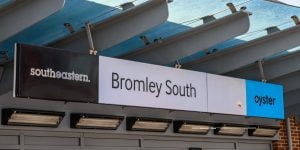
Image: Jono Photography/Shutterstock.com
Now you know what you need to know, you can probably just follow the street signs of the sat nav. If not, try these directions on for size.
By Road
If you take the A23 south from London, you will reach Bromley.
By Rail
There are two stations to choose from Bromley North or Bromley South.
By Air
The nearest airport is London City airport.
By Sea
Bromley has no sea access.
Liked Bromley?
If you liked reading about Bromley and want to explore other places in the local land, head to our travel guides and explore. You don’t even need to leave your couch.
[i] https://www.bromley.gov.uk/info/200064/local_history_and_heritage/379/history_of_the_bromley_area/3
[ii] https://www.mylondon.news/news/south-london-news/bromley-good-place-live-london-15569399
[iii] https://www.bromley.gov.uk/info/200064/local_history_and_heritage/379/history_of_the_bromley_area/4
